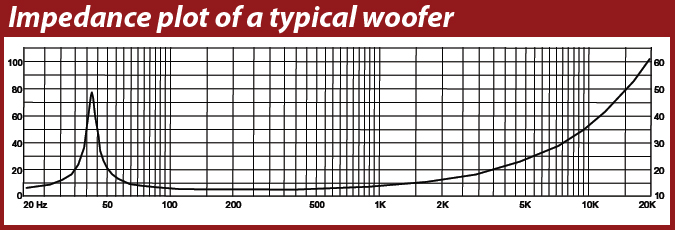Impedance and Resistance – what’s the difference?
Why does my 8 ohm speaker read 6 ohms when I measure it on a multimeter? It must be faulty right?
WRONG!
I’ve heard this so many times I’ve lost count, but there is a difference between impedance and resistance. When you measure resistance with a multimeter you are measuring DC resistance. The DC resistance is determined by the copper (or sometimes aluminium) wire in the voice coil of the speaker, and is actually as the name suggests; resistance to the passage of electric current through the copper. The key point here is that the electrical current travels in one direction only, and is fixed and does not change.
Impedance is equivalent to resistance, but for circuits where the voltage and current change, such as in a loudspeaker. An extra factor comes into play, which is the fact the the loudspeaker is based on a coil of wire. This coil of wire acts as an inductor. Without getting too involved in the science part of this, its sufficent to know the inductor creates an additional ‘reactance’ to alternating signals, which when added to the DC resistance of the voice coil, gives the overall Impedance.
To complicate matters further, the Impedance varies with frequency, so the 8 ohms specified for loudspeakers is not totally accurate, it is referred to as ‘nominal impedance’ – a kind of ‘average’ impedance figure that can be used for typical calculations involving loudspeakers. The graph below show a typical 18″ subwoofer, the impedance is shown on the scale on the left hand side.
For purposes of being able to run your own sound system, or building your own speakers, it’s sufficient to accept the manufacturer’s quoted impedance as being correct for your application. You don’t need to be concerned with the finer points of impedance unless you get into more serious aspects of speaker design, and if you’re at that level, I highly doubt you will have bothered read this far, as you will know all of this already!

Leave a Reply
You must be logged in to post a comment.